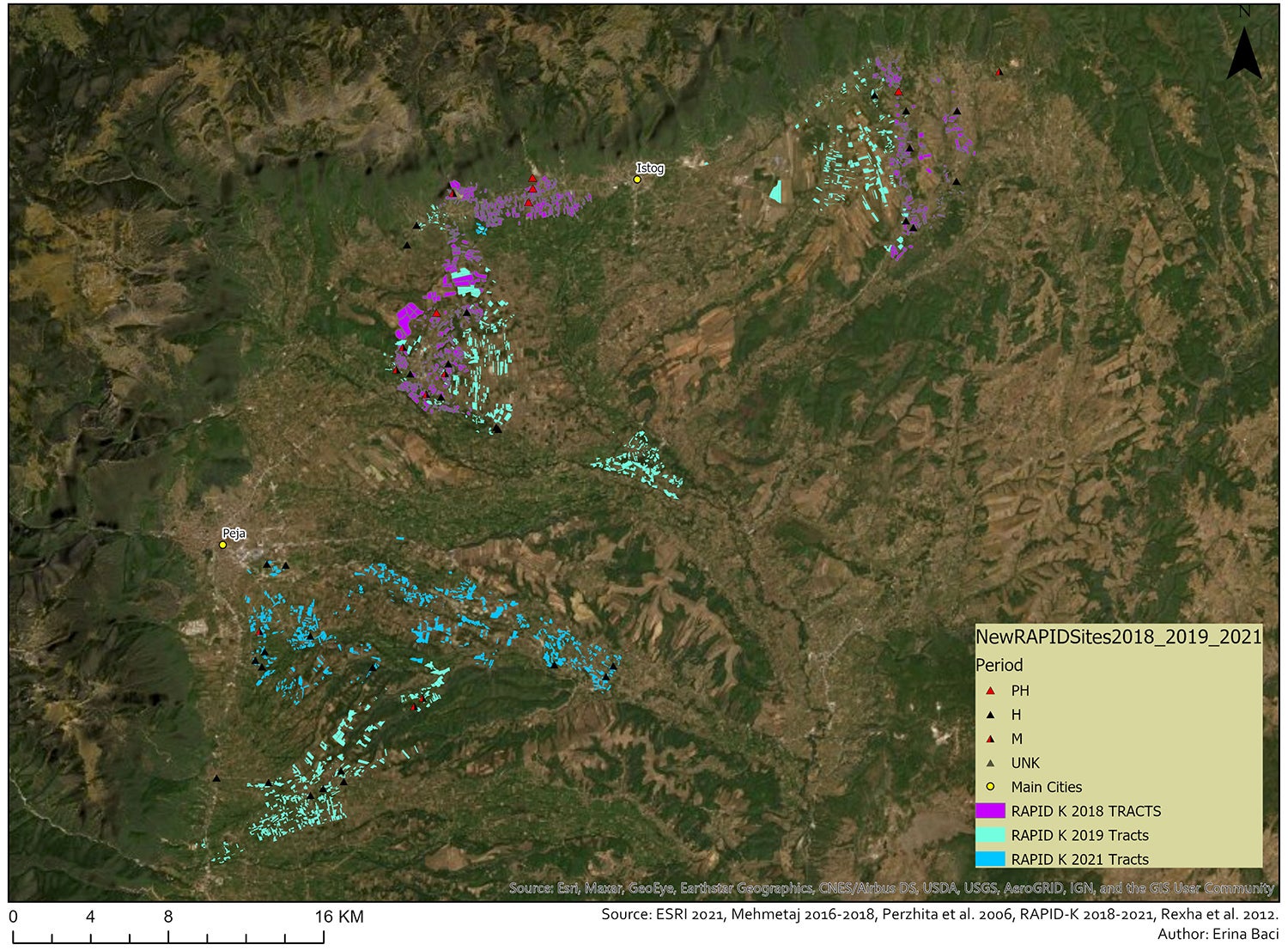In 2018, the RAPID-K crew found 15 new sites, ranging in age from the Neolithic to the Ottoman period. Many of the sites were medieval cemeteries and towers. Perhaps most important were two new Bronze Age sites—one of which stretches across nearly 50 hectares (about 124 acres). Stuck between a burial site and a hilltop fort, the Late Bronze Age site of Pepaj dates to about 1250 BC, according to recent 14C results. These 14C dates, taken from a construction cut through the site, are the first ever recovered for the Bronze Age in Kosova.
In 2019, during RAPID’s second season, four teams discovered an additional 24 sites. Many of these new sites, like those found in 2018, are multicomponent, having produced artifacts from several different periods. Team E worked in the vicinity of the known Neolithic site of Sredorekë, where Team A worked in 2018, further documenting its unexpectedly large size and the presence of smaller, satellite concentrations of Neolithic pottery. Team E expanded work by Team C in 2018 in the fields surrounding the city of Banja e Pejës (the Baths of Peja, so-named due to the presence there of hot springs). They discovered numerous sites, adding to the emerging picture of a landscape continuously occupied from prehistory to the present. Towards the end of the 2019 season, Team E identified a new prehistoric site, strewn with 1000s of chert artifacts, which was almost certainly a lithic workshop. Team F worked in a new region to the south of Peja near Isniq. They found new prehistoric and historic sites, and what we believe to be a new, very large tumulus (burial mound), which is upwards of 50 meters in diameter. Team G worked in a new region as well, in the vicinity of Zallq, where they discovered a new, very large Roman site.
In 2021, during RAPID’s third season, two teams (I and J) discovered an additional 11 sites. A third team (Team H) conducted geophysical surveys, with Dr. Apostolos Sarris (University of Cyprus), at the sites of Pepaj (Late Bronze Age), Lluga (Late Neolithic), and three hill forts. Team H also conducted systematic surface collections at Lluga. Finally, a small team stayed on at the end of the season, under the direction of Erina Baci, a PhD candidate in anthropology, and conducted systematic surface collections at the three hill forts. Team I surveyed the fields south of the so-called “Battery Factory” site, a very large, known Roman site, located on the outskirts of Peja. As expected, they found large numbers of Roman artifacts and possible extant architecture. Team J surveyed areas to the southeast of Peja, including villages located on both sides of the Bistrica River, from Gorozhdec to Jabllanicë. They found three sites, which are (possibly) Prehistoric, Late Roman, and Medieval in date.
